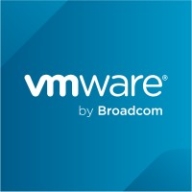

DX Unified Infrastructure Management and VMware Aria Operations for Applications compete in the IT infrastructure management category. VMware Aria Operations has the upper hand with its advanced integration in new tech stacks and cross-platform monitoring capabilities.
Features: DX Unified Infrastructure Management offers extensive scalability, a wide array of monitoring probes, and stability due to its non-Java technology. Simple deployment and flexible customization tools like Infrastructure Manager and Unified Monitoring Portal are noteworthy. VMware Aria Operations for Applications focuses on cross-platform monitoring with robust support, especially in cloud environments, and notable integration capabilities with new tech stacks.
Room for Improvement: DX Unified Infrastructure Management could improve the administration interface, enhance mobile interfaces, and provide better reporting customization. VMware Aria Operations for Applications needs robustness in large environments, improved alert configurations, and seamless setup processes.
Ease of Deployment and Customer Service: DX Unified Infrastructure Management supports hybrid, on-premises, and public cloud deployments with commendable but sometimes challenging customer service. VMware Aria Operations also supports hybrid and on-premises environments, with improved support, although with some decline in quality after acquisition.
Pricing and ROI: DX Unified Infrastructure Management's pricing is high but considered cost-efficient with good license planning, leading to excellent long-term ROI. VMware Aria Operations for Applications is seen as costly due to multiple licenses required for integration, but it provides value by consolidating technologies within a unified framework.
| Product | Market Share (%) |
|---|---|
| VMware Aria Operations for Applications | 1.9% |
| DX Unified Infrastructure Management | 0.6% |
| Other | 97.5% |


| Company Size | Count |
|---|---|
| Small Business | 29 |
| Midsize Enterprise | 20 |
| Large Enterprise | 80 |
| Company Size | Count |
|---|---|
| Small Business | 4 |
| Midsize Enterprise | 1 |
| Large Enterprise | 10 |
DX Unified Infrastructure Management is the only solution that provides an open architecture, full-stack observability and zero-touch configuration for monitoring traditional data center, public cloud, and hybrid infrastructure environments.
Designed to ensure an optimal end-user experience, this solution provides a modern HTML5 operations console that makes it easy and fast for today’s IT teams to implement, use, and scale – leading to faster time to value.
VMware Tanzu Observability by Wavefront is a powerful tool for monitoring and analyzing the performance and availability of applications and infrastructure in real-time.
With its comprehensive monitoring capabilities, visualizing and analyzing data becomes effortless. The real-time alerting system ensures timely issue resolution, while scalability and a user-friendly interface provide a seamless experience for smooth operations.
We monitor all Cloud Monitoring Software reviews to prevent fraudulent reviews and keep review quality high. We do not post reviews by company employees or direct competitors. We validate each review for authenticity via cross-reference with LinkedIn, and personal follow-up with the reviewer when necessary.